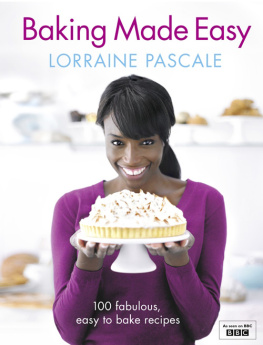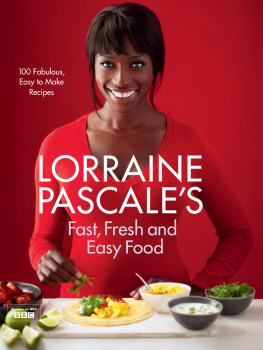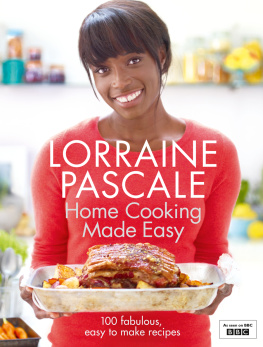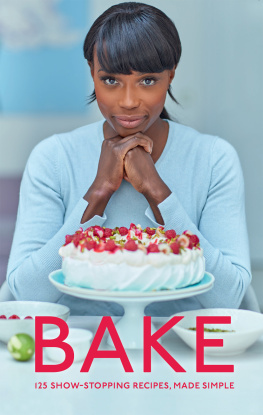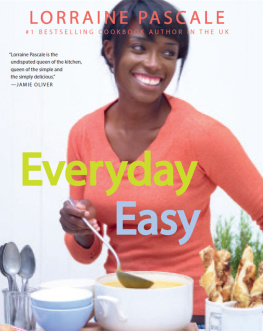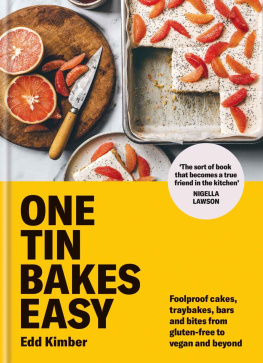I am sitting alone one Sunday morning doing nothing in particular. Then an idea hits me from nowhere (I am full of thoughts when I am at my most relaxed, like all of us I suppose!) what if I could create a book of recipes that were lighter in fat, sugar and calories but that tasted just as good as naughty ones? Sounds easy, I think to myself! I phone a friend who, after hearing my latest new idea, responds with, Why would anyone not want that... but can you really do it? At the time I didnt know what a mammoth task I had set myself.
My first challenge was to make a lighter sponge a lighter Victoria sponge. A doddle, I thought, but 11 attempts later and with a pile of quasi-sponge sandwiches covering my kitchen table, I thought it had beaten me. I genuinely felt despondent and a little bit stupid. But I was encouraged by my loyal publishers and a close circle of friends to keep going, which I did, thankfully. I hadnt realized that as I approached the eleventh attempt of the sponge, I had been getting close to the magic formula. The twelfth came out of the oven exactly like Id envisaged it would. Eureka! I had cracked it, and my journey to lighter baking began in earnest.
I own an unashamedly indulgent cupcake shop in Covent Garden, and have done so for a good few years. It could therefore perhaps seem strange for me to be writing a book on how to lighten your baking. However, in the shop we do our best to reduce the fat and sugar in the cakes, constantly tweaking them to make them more healthy while retaining the flavours people know and love. These cakes were sources of much inspiration as I embarked on developing lighter bakes.
Writing the recipes for this book was totally counterintuitive. When developing normal recipes, the way to guarantee theyll taste great is by loading them with lots of full-fat butter and sugar. So how on earth was I going to create lighter indulgences that still had you going back for more? I started to do lots of research, scouring magazines, books, the web, and reports by associations such as the British Nutrition Foundation, the NHS and the British Heart Foundation, to see their recommendations on nutritious sweet treats. Funnily enough there is not much information out there (yet I believe there will be) so it was going to be a journey of trial and error. Many a trial and many an error!
I went to the supermarket and bought a stack of dairy products (cream cheese, crme frache, cottage cheese, etc. low-, full- and no-fat versions) and began decreasing the butter, substituting it with other dairy. Some cakes came out flat, some thin, but eventually I found a rhythm which enabled the bakes to work.
A team of dietitians and nutritional specialists helped me too (I say helped, they pretty much did all of the nutritional calculations!), figuring out the nutritional breakdown of each recipe as we sought to achieve the optimum mix. We then scoured other recipes out there to find a comparative full-fat, plenty-of-sugar reference point. I thought it would be good to share these comparisons with you so you can see exactly what you are getting and exactly how the recipes compare to their less-healthy comparisons per same-size serving. Its not an exact science, and is not intended to be so, but hopefully it offers a clear indication of what the difference is. I struggled to reduce the sugar and fat in significant enough quantities in some of the recipes, so some are pretty much the same as the recipe I compare them to, but I have taken the liberty of leaving the analyses in and, wherever possible, added wholemeal flour to make them a healthier bite at the very least.
Some cheeky books wax lyrical about how low fat or low sugar a cake is, but when I read the recipe carefully it says that a cake that would usually serve 8 people, serves 16 people. Therefore each meagre slice looks really low in calories, sugar and fat however the cake itself is not. I have tried really hard not to do that. If I feel the slices are a little on the small side, I say just that: makes 16 skinny slices. Transparency is the best policy , I find!
On the next page are my lighter baking tips, the essence of what makes a successful light bake, for those wanting to eat healthier baked foods, those wanting to cut calories, and those wanting to eat slightly fewer or healthier carbs.
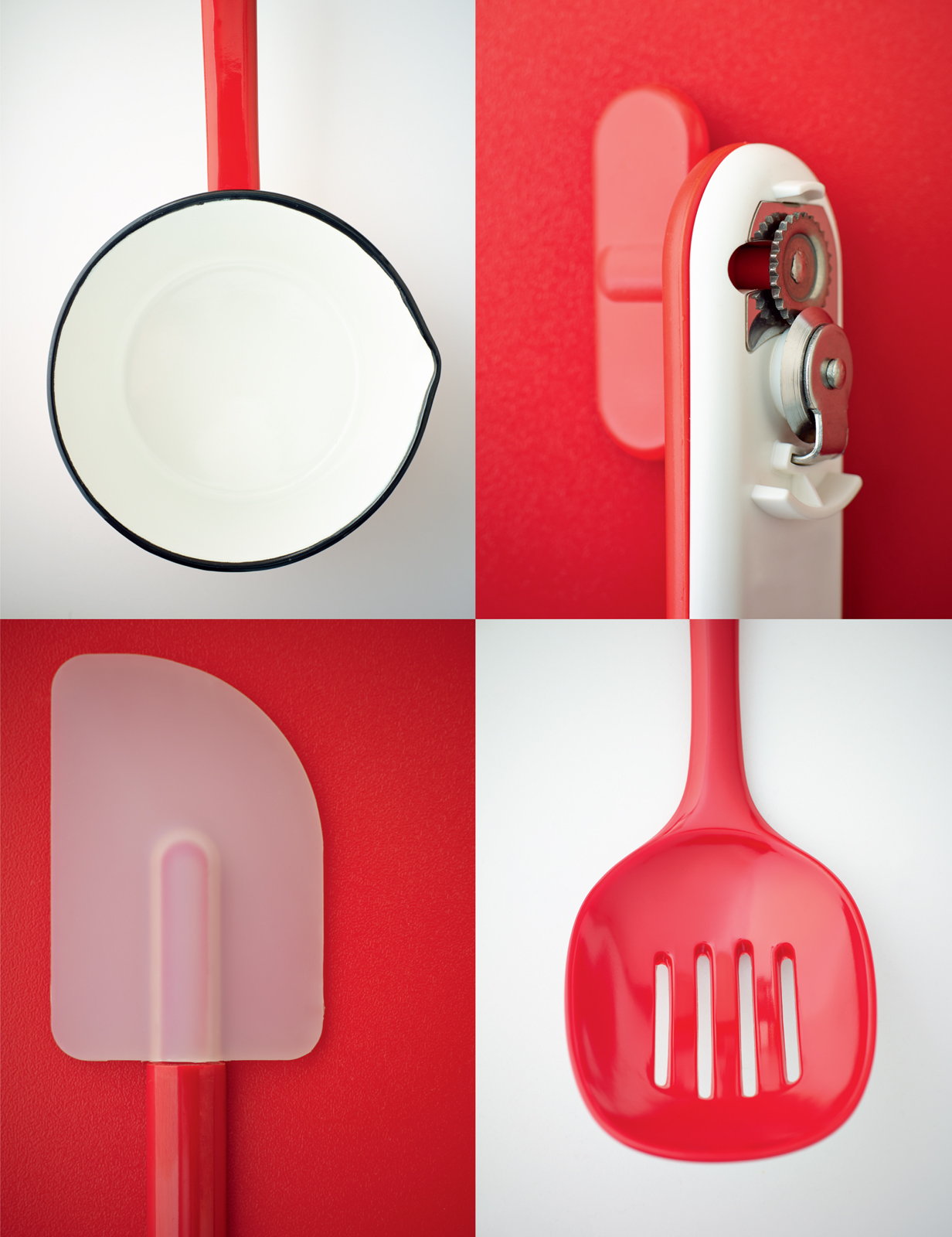
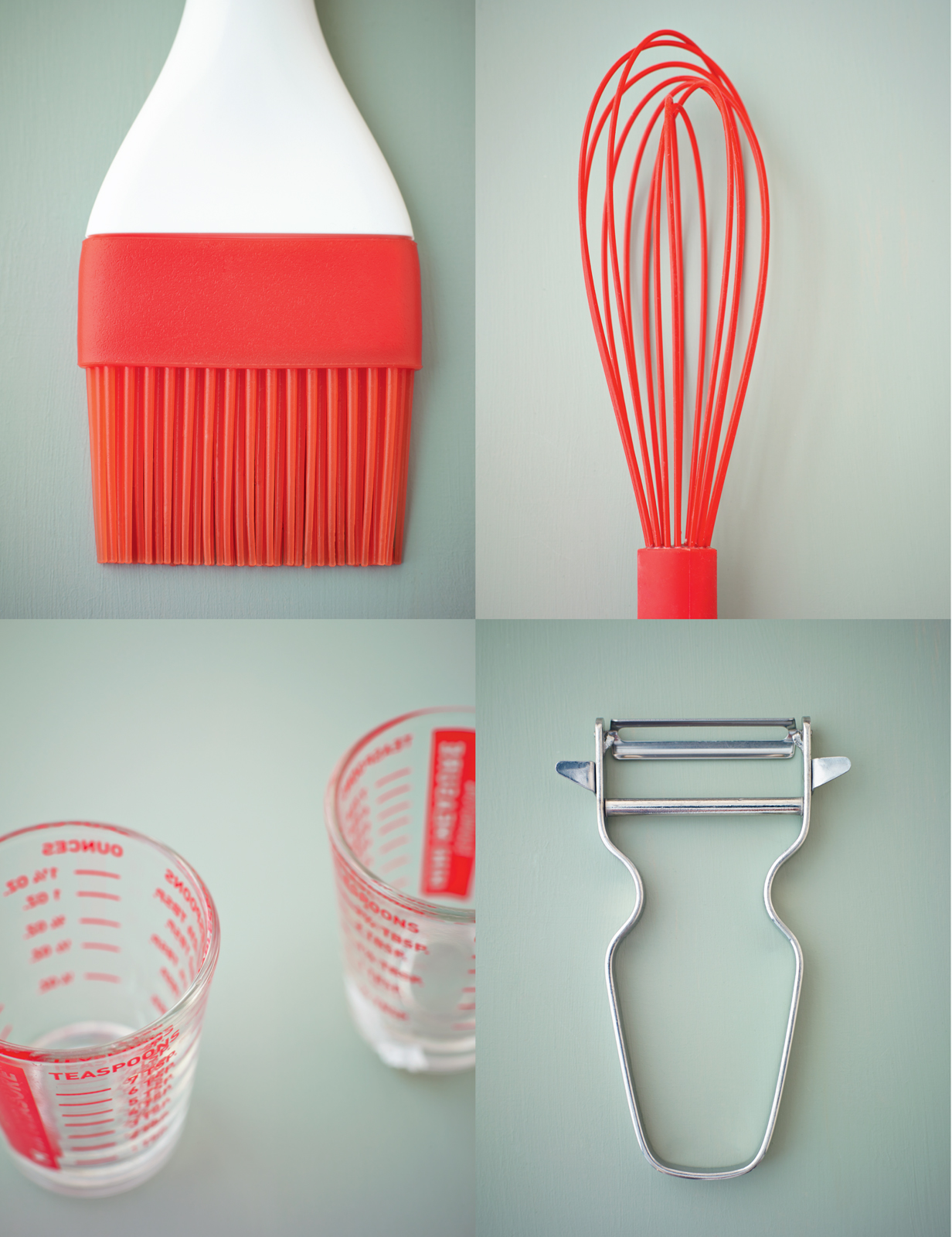
INGREDIENTS
I tried and tested many different ways of making the cakes lighter but still keeping the naughty flavour. So beware of freestyling with the ingredients you may not get the results you are after.
Ive substituted butter in some recipes with less naughty products like yogurt, so the texture may not be quite what you are used to; still delightful, but a little different. Cakes with lower fat and sugar content can sometimes have a firmer outside (crust) but inside it will be like a fluffy cloud.
All eggs are medium unless otherwise stated.
Wholemeal flour makes an appearance in many of my recipes. It offers added fibre and a wonderfully nutty flavour, and apparently the carbohydrate is more slowly absorbed by the body than white flour.
Truvia, Stevia, fructose, xylitol (and the list goes on) are all sugar derivatives or substitutes available in shops and online. I had a good play with them all and, to be fair, I rather liked some of them but after much research and soul searching I decided to leave them out. They are often expensive, not always available and some have received mixed reports from scientists and dietitians.
I also decided not to use low sodium salt: nutritional experts advise its far better to get accustomed to the taste of food with little or no salt, than replace it with a substitute, and I agree.
Ground almonds are a good substitute for flour, if you want to head down the low-carb route. If I was brave I would have used almond flour or coconut flour instead of wheat flour I believe this is the future in eating, as people start realizing that perhaps fat does not make you fat, its the sugar and carbs which cause the problem. But I acknowledge that lots of people have cut fat and sugar from their diets with favourable results, and I wanted to write a book which would suit as many people as possible.
Dried fruit is laden with sugar. I do love dried fruit, and it makes an appearance in some recipes, but I have replaced dried fruit with fresh fruit in many recipes because fresh fruit contains less concentrated sugar.
Rapeseed oil is my oil of choice, as it is very low in saturated fat compared with other oils.
Use the best vanilla you can afford. You can get the pods online much cheaper than in the supermarkets, or you can get vanilla bean paste or vanilla extract which are almost black in colour and smell great. Sadly vanilla essence (which comes in a tiny bottle and is the colour of dodgy beer) really is no good for flavour.
METHODS & RESULTS
Before baking, check your oven with an oven thermometer. Because of the lower butter and sugar content of the cookies, it is really important that they are not over-cooked. If you think your bake is almost ready, that would be a good time to pull it out so it stays nice and moist.

